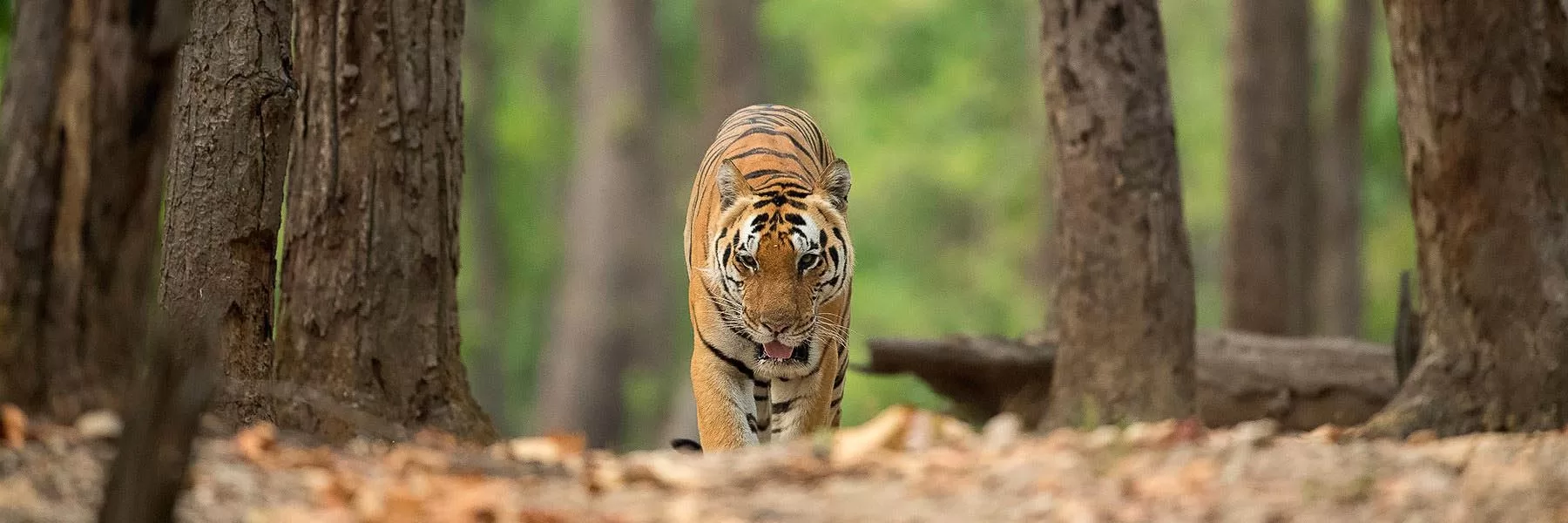Spotting tigers roaming carefree in the wilderness is a scintillating experience. But one needs to be indeed lucky to spot these elusive felines. Wildlife enthusiasts are often curious to know how to maximize their chances of spotting the big cat. This article is especially dedicated to them.
Let us start with a basic principle. If you remember, we studied the Law of Averages in school. For example: if the probability of an event is say 20% and I have one chance, it will be either 0% or 100%. But if I give 1000 attempts, chances are 200 times the event will happen and 80% it would fail.
The same applies here as well. If at a given park, people can spot a tiger 20% of the times, more attempt one gives, and more are the chances of spotting the Tiger. Remember, we are talking about an uncontrolled environment here, and we have no control over the sightings. Let us understand how we track Tigers in Indian wildlife parks.
How to spot/ track tigers in Jungle
- Alarm calls – Usually the prey of Tiger like langurs, spotted deers or sambar deers give out a peculiar call to their herd sounding danger, when they spot a Tiger. Once we hear such alarm calls, it is reasonably certain that there is a top predator in the area.
- Pug marks – If there are fresh Tiger pug marks on our tracks then we can be certain that the apex predator has walked this path recently, and we try to follow the trail while staying on our designated track.
- Information from other jeeps – Usually if other jeeps spot a Tiger or hear alarm calls, they inform to fellow guides and drivers. However in India we do not have radio communication amongst the driver like some African game parks. Only forest officials are authorised to carry a radio.
Factors that increase the chances of spotting the Tiger
- The park itself: Tiger population varies from park to park. And then there are parks with higher tiger density too. If you choose to visit Sundarbans or Thekkady to see tigers, you are more likely to be disappointed if Tiger is the sole aim. Some of the best parks to spot tigers in India as of now are Tadoba Andhari Tiger Reserve (Maharashtra), Bandhavgarh National Park (Madhya Pradesh),Ranthambhore National Park(Rajasthan), Kanha National Park (Madhya Pradesh) and Jim Corbett National Park (Uttarkahand). Also there are some places where Tigers are in plenty but difficult to spot due to navigation. Sunderbans above is an example.
- Time of the year: Summers may increase the chances of tiger sightings. Tigers are most likely to wander in search of water and may reach near a lake or a stream as smaller water holes dry up. Some parks also have artificial waterholes created to feed water to animals. Mostly, jeeps in the park take you near sources of water thus making it easier to spot the tiger. But summers can be quite hot in some North and Central Indian parks. But as they say, no gain without pain!
- Next to kill: If a tiger makes a big kill like a sambar deer, it takes four to five days to consume it fully. So if anyone has seen a tiger next to the kill, the day before you visited, chances of it staying in the same region is high as it will return to its kill till the time it is finished.
- Zone of the park: Just like we humans created international borders, forest authorities created zones in forests (pun intended)! Usually all big parks are divided into multiple zones and usually any tourist vehicle can ply in only one zone during a safari. There are exceptions too and in some parks like Tadoba, only the gate of entry is fixed with booking but vehicles can ply anywhere inside the park. However these zone restrictions do not apply to animals as they are free to move anywhere. The point we are trying to drive home is that some zones of the park have higher chances of tiger sightings than others.
- Skill of your guide: This is one of the most important factors. Nothing helps you have a great wildlife experience than a skilled naturalist. With years of experience, a good naturalist can make your safari experience entirely worthwhile even if you do not spot a Tiger.
Factors that reduce the chances of spotting the tiger
- Rain on same or previous day: If it rains on the day of your visit to the park or it has rained the previous day, tigers are more likely to be confined to their place due to ample supply of water.
- Tigress with small cubs: A tigress with a cub is likely to be confined to a particular place till three months and the cubs are not likely to be seen to tourists.
- No sighting in the park on previous day: There are instances when tourists don’t get to see tigers for days. Do check with locals or your naturalist about how sightings have been on previous days.
We hope that this article is useful for wildlife lovers who are really keen to watch Tiger. However if you ask us our opinion, while spotting a Tiger definitely gives a thrill to wildlife enthusiasts and more so to beginners, but there are a lot many other denizens in any jungle which should be equally sought after and they too are beautiful creations of god.
Our two cents – go with an open mind and enjoy the wilderness as it unfolds to you, and who knows you may spot a tiger lurking in the woods!











